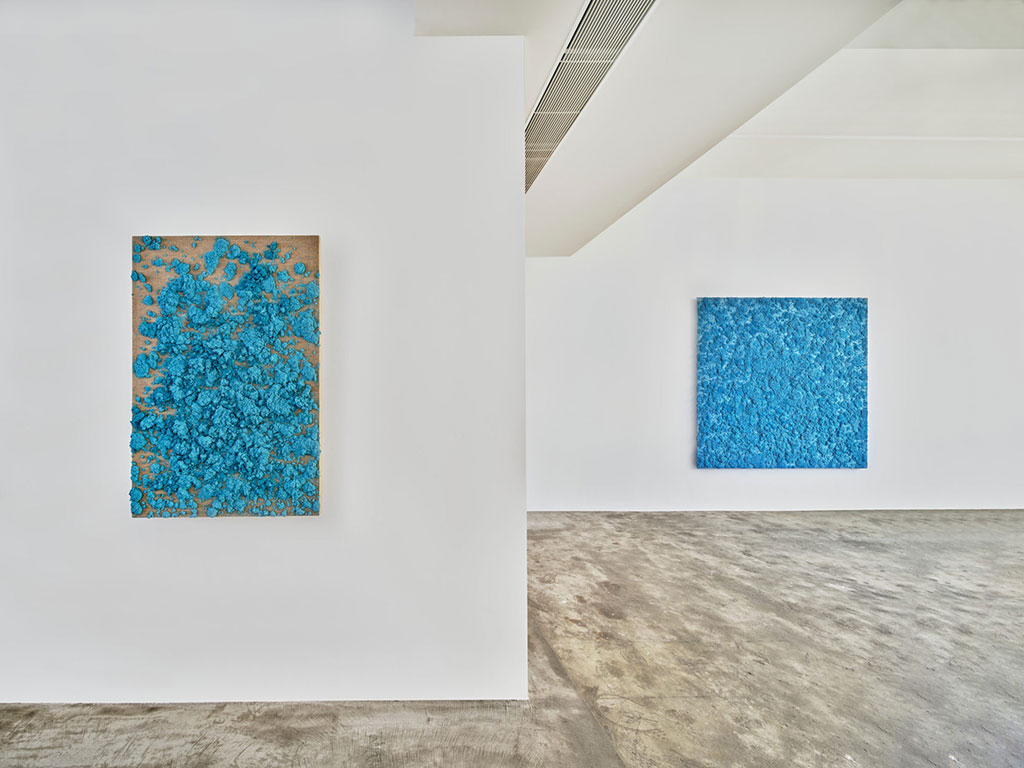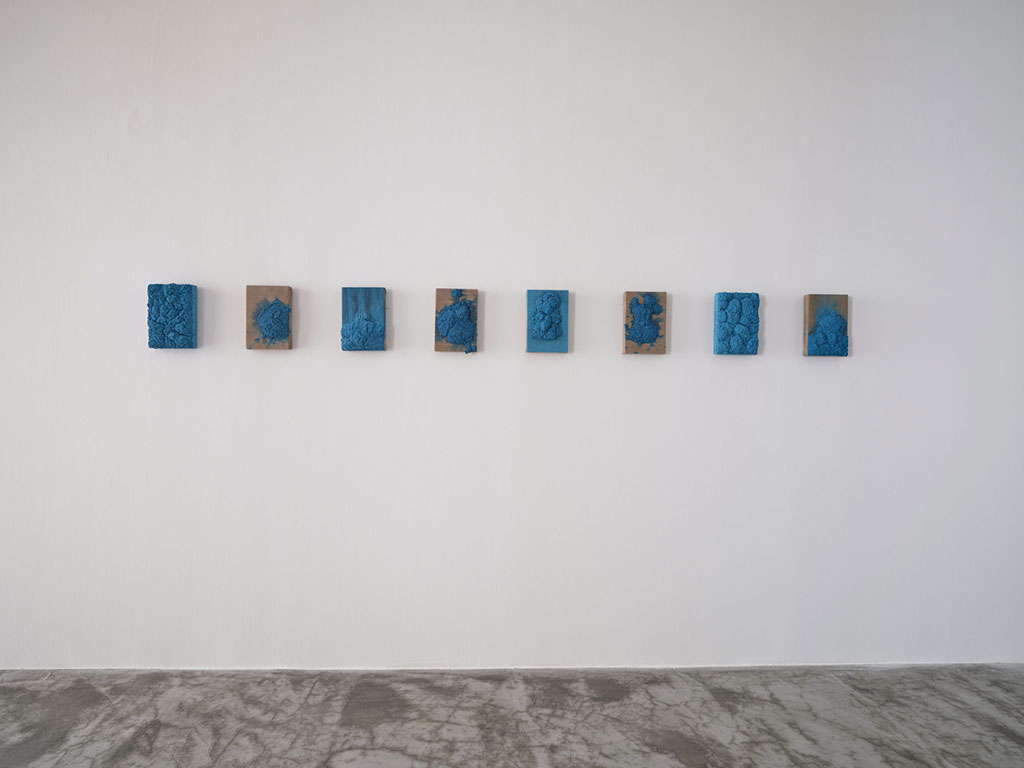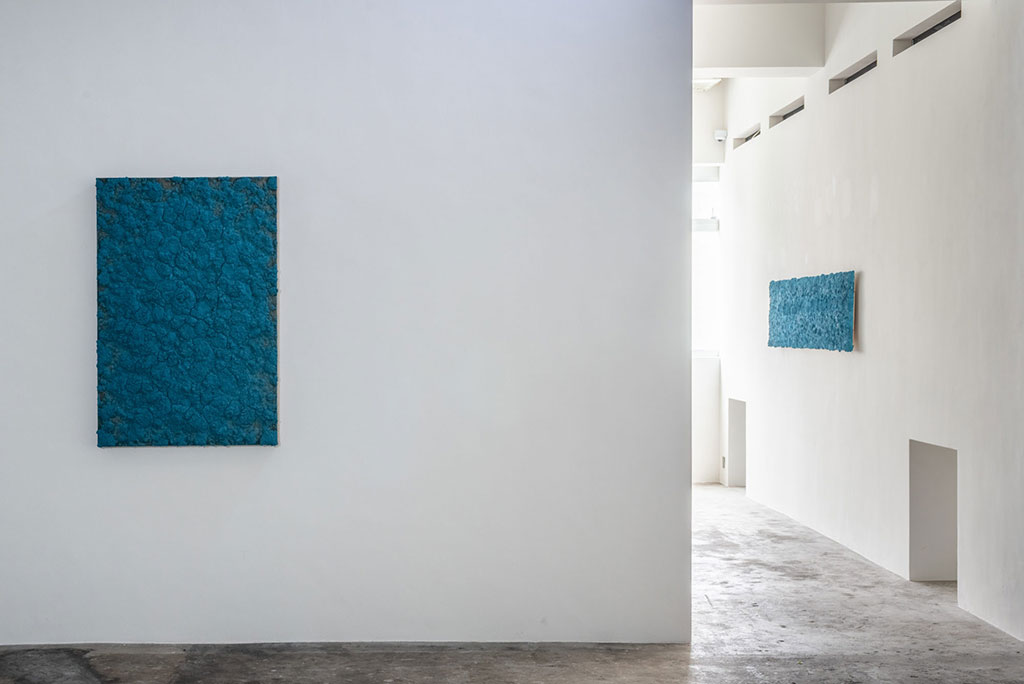ART CITIES:Hong Kong-Bosco Sodi
 Bosco Sodi is known for his use of raw, natural materials to create large-scale textured paintings and objects. Sodi has discovered an emotive power within the essential simplicity of his materials and the vivid pigments he sources. Sodi has described his creative process as a “controlled chaos” that makes “something that is completely un-repeatable.” Focusing on material exploration, the creative gesture, and the spiritual connection between the artist and his work, Sodi seeks to transcend conceptual barriers. His works become memories and relics symbolic of the artist’s conversation with the raw material that brought them into creation.
Bosco Sodi is known for his use of raw, natural materials to create large-scale textured paintings and objects. Sodi has discovered an emotive power within the essential simplicity of his materials and the vivid pigments he sources. Sodi has described his creative process as a “controlled chaos” that makes “something that is completely un-repeatable.” Focusing on material exploration, the creative gesture, and the spiritual connection between the artist and his work, Sodi seeks to transcend conceptual barriers. His works become memories and relics symbolic of the artist’s conversation with the raw material that brought them into creation.
By Efi Michalarou
Photo: Axel Vervoordt Gallery Archive
Bosco Sodi for his solo exhibition “A Thousand Li of Rivers and Mountains”, in December 2019, Sodi spent two weeks in Hong Kong to create new works specifically exploring the depths and boundaries of the colour turquoise. During Sodi’s Hong Kong stay, the city’s geography, landscape, energy, and rhythm had an interesting influence on his practice and creation process. The artist states that local life added a unique depth and dimension to his work. The turquoise pigments that Bosco Sodi used as the basis for his new paintings were inspired by the colours used in Wang Ximeng’s twelve-meter-long landscape, “A Thousand Li of Rivers and Mountains”, painted over the course of six months in the year 1113 CE when the artist was just eighteen years old. Though he lived only until he was twenty-three, Wang was mentored by Emperor Huizong (1082–1135) of the Northern Song Dynasty, who himself was a talented painter and calligrapher, and his massive painting marked the apogee of a style known as “blue-and-green” painting, which was produced with malachite green and azurite blue. In addition to the new series of paintings, the gallery is presenting a selection of Sodi’s clay sculptures, created at the artist’s studio in Oaxaca, Mexico. There, he extracts raw earth from the ground and combines it with water and sand to form clay. He uses this elemental material, embedded with ancestral significance, to create minimalist sculptures. Once cured, the clay sculptures are fired in a traditional brick kiln with wood, jacaranda seeds, and coconut shells, a process that imbues the sculptures with varied terracotta hues, streaks of green and black, and a multitude of fissures in the surface, giving each cube a unique identity. Bosco Sodi’s works with paint can resemble many things in the cultural context of today’s scopic technology — from microscopic images to aerial perspectives on the landscape — but they don’t mean anything specific in themselves. They are definitely, and defiantly, marks of a human but not necessarily a particular one with a delineated biographical narrative. Instead, the figure of the artist is more universal, less individualised, visible to us as a single person manipulating materials to an aesthetic end — and here capitalising on the intrinsic and anciently recognised beauty of turquoise and clay. What he channels and confronts, from kinetic forces to the universal centering effects of gravity, represent elemental forces of chaos and order, and becomes a cosmological metaphor, deeply of the world while also apart from its many manifestations.
Info: Axel Vervoordt Gallery, 21F Coda Designer Centre, 62, Wong Chuk Hang Road (Entrance via Yip Fat Street (next to Ovolo Hotel), Hong Kong, Duration: 13/2-5/9/20, Days & Hours: Tue-Sat 11:00-19:00, www.axel-vervoordt.com



